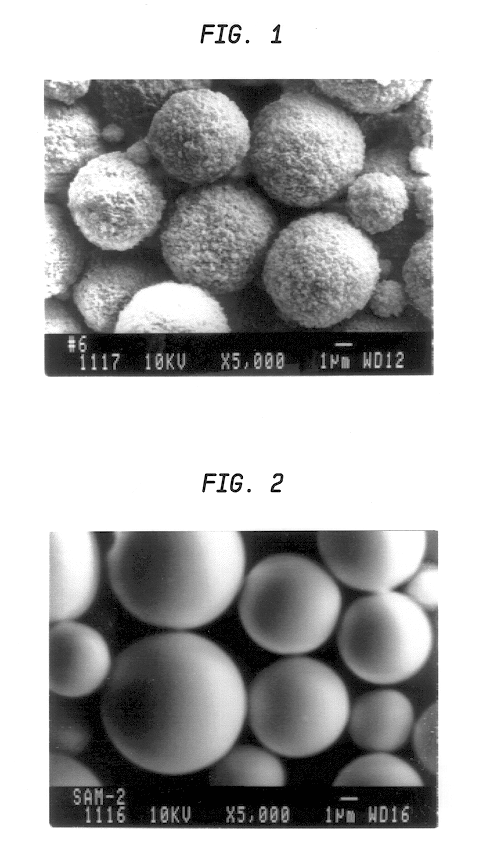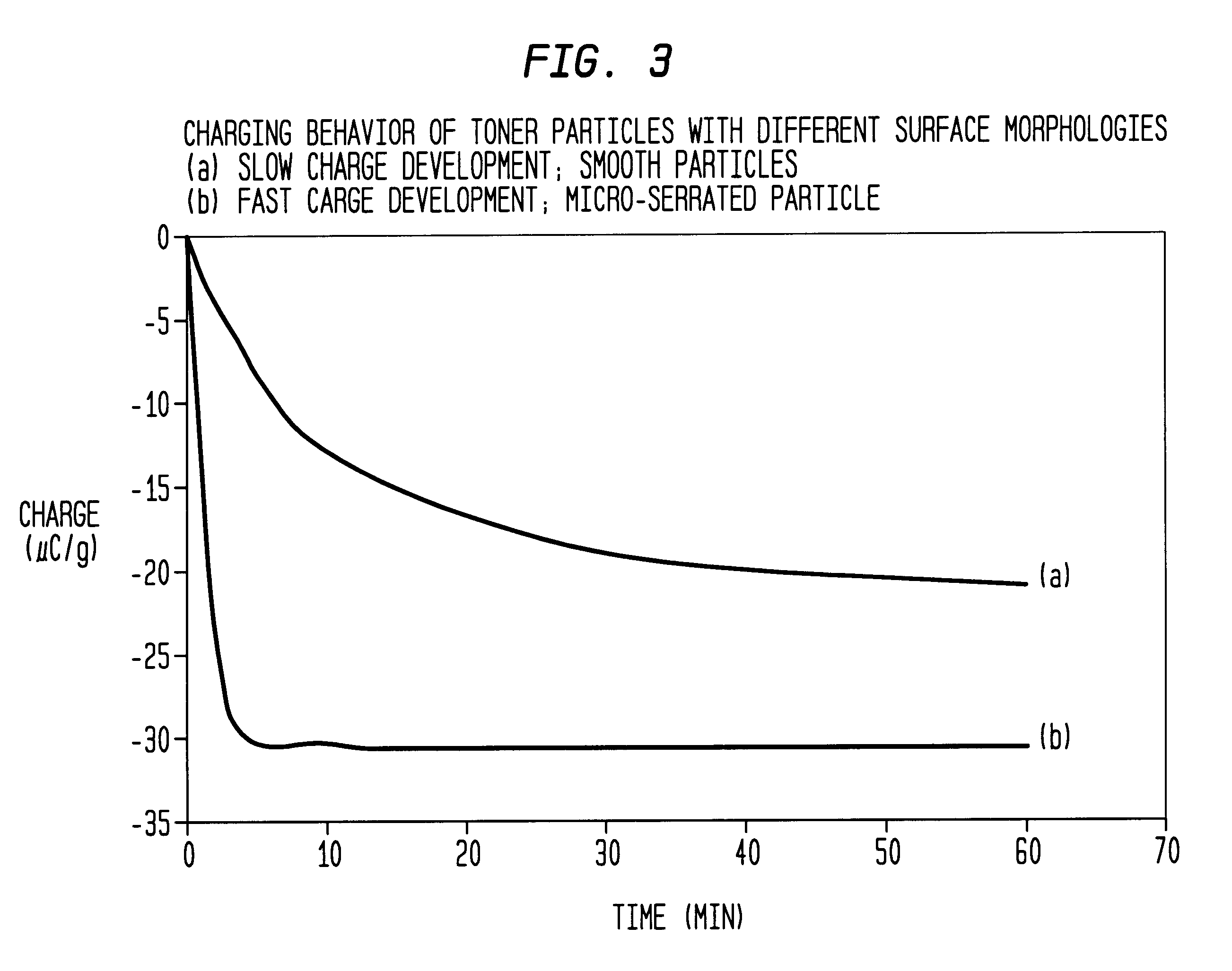Micro-serrated particles for use in color toner and method of making same
a technology of color toner and microserration particles, which is applied in the field of microserration particles for use in color toner, can solve the problems of difficult to achieve resolutions better than about 600 dots/inch, difficult to make particles smaller, and entrapment of dispersed medium inside toner particles, so as to facilitate the overall comminution process, reduce melt viscosity of resin composition, and increase surface area
- Summary
- Abstract
- Description
- Claims
- Application Information
AI Technical Summary
Benefits of technology
Problems solved by technology
Method used
Image
Examples
example 1
Preparation of a Cationically Dyeable Polyester Resin by Melt Condensation
A cationically dyeable polyester resin was prepared by a melt condensation process. Into a 10-liter glass reaction vessel fitted with a paddle-type stirrer and a 20 cm fractionating column, dimethyl terephthalate (941 grams, 4.85 moles), dimethyl isophthalate (970 grams, 5.0 moles), sodium salt of dimethyl 5-sulfoisophthalate (44.4 grams, 0.15 moles), and 1,2 propylene glycol (1520 grams, 20 moles) were charged. Further, 1.4 grams of titanium tetra-isopropoxide and 5.0 grams of IRGANOX 1010 (available from Clariant Corporation, East Hanover, N.J.) were added as the ester exchange catalyst. The reactants were charged at ambient temperature and purged with argon gas for about 1 hour. The reactant mixture was then heated to 150.degree. C. with the stirrer on at 50 rpm to form a homogeneous melt. Subsequently, the reaction mixture is heated from 150.degree. C. to 200.degree. C. under a flowing argon atmosphere ove...
example 2
Dispersion Comminution of Polyester Resin
Into a 1--1 round bottom flask equipped with a stirrer and a condensing column, 300 grams of the polyester resin of Example 1 and 90 grams of N,N-dimethylformamide were charged. The content was heated to 150.degree. C. and maintained at the temperature for 20 minutes under a total reflux condition. When the mixture attained fluidity, 30 grams of Bontron E-84 (a charge control agent available from Orient Chemical Company, Springfield, N.J.) was added and the stirrer was set at 30 rpm. Then, the stirrer speed was raised to 100 rpm and maintained at the speed for one hour to thoroughly mix the resin and the additives.
Subsequently, 300 grams of 1:1 mixture of Isopar-L.RTM. and Isopar-V.RTM. (paraffinic solvents available from Exxon Chemical Company, Houston, Tex.) and 30 grams of Ganex V-220 (a non-ionic surfactant available form ISP Corporation, Wayne, N.J.) were charged into the flask. The content turned into a milky dispersion. The dispersion ...
example 3
Dispersion Comminution of Polyester Resin with Mixed Surfactants
A particulate polyester composition was prepared using the same procedure of Example 2 except that a mixture of 24 grams of Ganex V-220 and 6 grams of Genapol 26-L-1 (a non-ionic surfactant available from Clariant Corporation, Charlotte, N.C.) in place of 30 grams of Ganex V-220.
The volume average particle size was 4.7 microns and the span 0.85. Scanning electron microscopy examination of the resin particles showed that the particles were substantially spherical with rough surface texture. The surface roughness index determined by the BET isotherm measurement was 2.0. The example showed that the particle size is correlated to the amount of surfactant used in the dispersion comminution process.
PUM
| Property | Measurement | Unit |
|---|---|---|
| boiling temperature | aaaaa | aaaaa |
| volume average diameter | aaaaa | aaaaa |
| volume average particle size | aaaaa | aaaaa |
Abstract
Description
Claims
Application Information
 Login to View More
Login to View More - R&D
- Intellectual Property
- Life Sciences
- Materials
- Tech Scout
- Unparalleled Data Quality
- Higher Quality Content
- 60% Fewer Hallucinations
Browse by: Latest US Patents, China's latest patents, Technical Efficacy Thesaurus, Application Domain, Technology Topic, Popular Technical Reports.
© 2025 PatSnap. All rights reserved.Legal|Privacy policy|Modern Slavery Act Transparency Statement|Sitemap|About US| Contact US: help@patsnap.com



